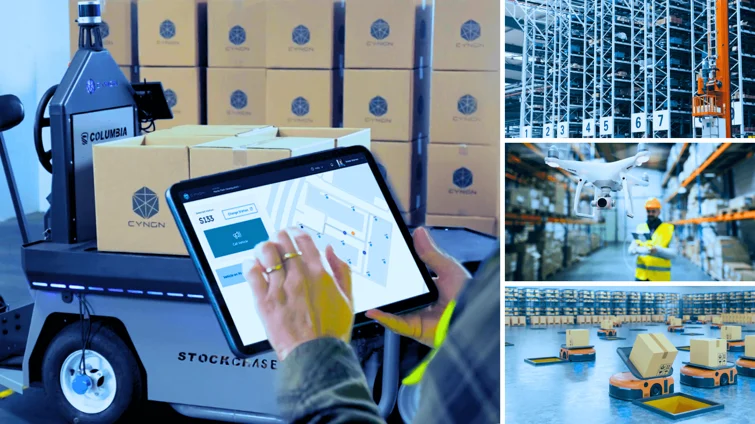Automation is no longer a futuristic idea—it’s the new foundation of supply chain success. Across industries, warehouse automation has become a powerful way to boost efficiency, accuracy, and scalability. But while the promise of robotics, data analytics, and smart systems is exciting, rushing into automation without a clear plan can create more problems than it solves.
For supply chain leaders, the key isn’t just investing in technology—it’s understanding how to align automation with business strategy, process design, and workforce readiness. This is where warehouse automation consulting makes all the difference. Before making any major investments, here’s what you need to know to build a warehouse that’s not just automated, but intelligent.
Why Warehouses Struggle to Keep Up With Modern Demand
The Pressure of E-Commerce Growth and Labor Shortages
E-commerce and rapid delivery models have changed expectations. Customers now want same-day shipping and real-time order tracking. Meanwhile, labor shortages and high turnover rates make it difficult for warehouses to maintain consistent output. Automation helps bridge that gap—but only if it’s properly implemented and integrated with your supply chain operations.
The High Cost of Manual Handling and Human Error
Even the best-trained workers can make mistakes. Manual picking, packing, and sorting often lead to lost inventory, damaged products, or inaccurate orders. These small errors add up over thousands of transactions. By introducing automated picking systems and conveyor-based workflows, warehouses can dramatically improve precision and reduce waste.
How Inefficient Processes Impact Customer Satisfaction
When products are delayed or misplaced, customer trust suffers. Speed and reliability are now competitive advantages. Poorly optimized workflows, long travel distances, and outdated software can turn even well-staffed facilities into bottlenecks. Automation done right ensures consistency, which directly translates into better customer satisfaction.
What Warehouse Automation Consulting Really Delivers
Defining Automation Consulting and Its Role in Supply Chain Success
Warehouse automation consulting goes far beyond installing robots or conveyors. It’s about strategic alignment—understanding your current processes, identifying inefficiencies, and designing solutions tailored to your operations. Consultants act as the bridge between business goals and technical execution.
From Assessment to Execution — How Consultants Build Smart Workflows
A good consultant doesn’t start with hardware; they start with data. They analyze your warehouse management system (WMS), order profiles, SKU velocity, and storage utilization. Then, they design a step-by-step roadmap that ensures automation fits seamlessly into existing systems. This approach minimizes disruption while maximizing long-term ROI.
Bridging the Gap Between Technology and Human Operations
Automation doesn’t replace people—it enhances them. Consultants help ensure your workforce is trained and engaged, reducing resistance to change. The right balance between machines and humans leads to safer environments, better morale, and smoother operations.
Common Challenges Businesses Face Without Expert Guidance
Over-Investment in the Wrong Technology
Without consulting support, many warehouses fall into the “shiny object” trap—buying expensive automation tools that don’t fit their needs. Automated storage and retrieval systems (AS/RS) or Autonomous Mobile Robots (AMRs) can boost efficiency, but only if they’re right for your throughput, volume, and space constraints.
Lack of Integration Between WMS, Robots, and ERP Systems
A warehouse is only as strong as its data flow. Too often, systems like Enterprise Resource Planning (ERP) and WMS don’t talk to each other, causing delays and miscommunication. Automation consultants specialize in integrating these technologies so information moves as smoothly as materials do.
Poor Change Management During Digital Transformation
Automation is a cultural shift as much as a technical one. Teams may fear job loss or resist new systems. Without proper communication and phased rollouts, automation projects can stall. Consultants help manage this change, ensuring that your staff adapts confidently to new workflows.
How Automation Consultants Solve Real-World Problems
Data-Driven Analysis and Simulation for Process Redesign
Consultants use data modeling and 3D simulation tools to visualize how changes will impact your operations before they’re made. This allows leaders to test various layouts, picking routes, and automation configurations without interrupting live operations. It’s a science-based way to plan smarter and spend wisely.
Vendor-Neutral Recommendations Based on ROI
One of the biggest advantages of hiring consultants is objectivity. Instead of promoting a single vendor’s equipment, they assess your needs and recommend the most cost-effective, high-performing solution. Whether it’s conveyors, shuttles, sorters, or cobots, decisions are based on return on investment—not marketing promises.
Seamless Implementation and Staff Training for Adoption
A well-designed system is only effective if people know how to use it. Consultants oversee installation, testing, and onboarding, ensuring the automation integrates smoothly with your workforce. They also establish key performance indicators (KPIs) so progress is measurable and continuous improvement becomes part of daily operations.
The Measurable Benefits of Strategic Automation
Boosting Throughput and Order Accuracy
Properly implemented automation can double or even triple throughput while maintaining accuracy levels above 99%. Automated picking, sorting, and scanning technologies minimize errors and accelerate fulfillment times, helping warehouses keep pace with customer demand.
Reducing Labor Dependency and Operational Costs
Automation doesn’t eliminate jobs—it shifts them. By taking over repetitive or dangerous tasks, machines free workers to focus on problem-solving, supervision, and quality control. This shift reduces overtime, lowers injury rates, and stabilizes labor costs over time.
Creating Scalable and Future-Proof Facilities
The best automation systems are modular. That means you can start small and expand as your business grows. Consultants design systems that accommodate future product lines, higher volumes, and new technologies without requiring a full redesign. Scalability ensures your investment stays relevant for years.
The Future of Warehouse Automation Consulting
The Rise of Artificial Intelligence and Predictive Logistics
Artificial Intelligence (AI) is changing how warehouses think and react. AI-driven systems analyze data in real time, predicting order patterns, optimizing routes, and even forecasting maintenance needs. Consultants use AI tools to build smarter, more adaptive warehouses that respond instantly to changing demand.
Using IoT and Digital Twins for Real-Time Optimization
The Internet of Things (IoT) connects every piece of equipment, from forklifts to sensors. Digital twin technology creates a virtual replica of your facility, allowing you to test new processes before applying them. Consultants leverage these tools to make your warehouse responsive, data-driven, and self-improving.
Sustainability and the Shift Toward Greener Automation
Today’s warehouses are not just smarter—they’re greener. Energy-efficient conveyors, regenerative drives, and intelligent lighting systems help reduce carbon footprints. Consultants now factor sustainability into every stage of design, proving that eco-friendly operations can also be cost-efficient.
Conclusion
Automation is reshaping how the world stores, moves, and delivers goods—but technology alone isn’t enough. Success in warehouse automation depends on strategy, design, and leadership. Warehouse automation consulting provides the insight and structure supply chain leaders need to make the right decisions at the right time.
Before investing in robotics or high-tech systems, step back and look at the bigger picture. Understand your workflows, define clear goals, and consult experts who can align automation with your long-term vision. Because when strategy meets technology, warehouses don’t just get faster—they get smarter, more resilient, and ready for the future.
Do Read: Are Smart Plumbing Systems Quietly Revolutionizing the Way Homes Stay Leak-Free?




